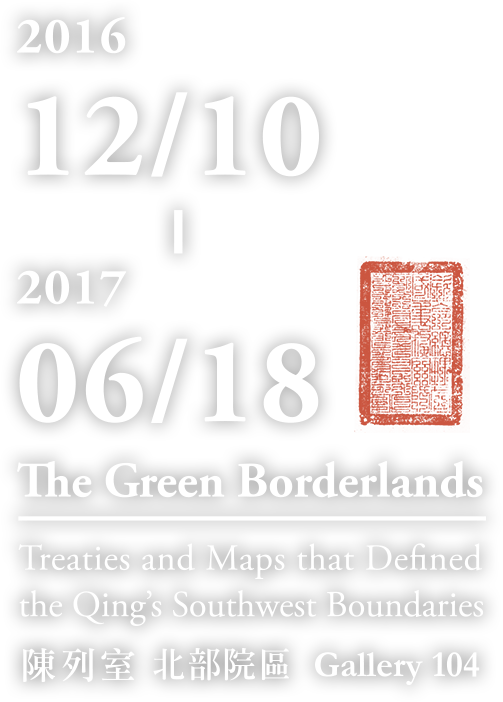Discussions to demarcate the Sino-Vietnamese border stemmed from Articles 1, 2, and 3 of the Treaty of Peace, Friendship, and Commerce between France and China. Article 3 stipulates that the Qing court and France send officials to conduct joint surveys of the border within six months of the signing of the Treaty. The Chinese provinces of Guangdong, Guangxi, and Yunnan shared a border with Vietnam, thus the border survey and demarcation was divided into the three sections of Guangxi-Vietnam, Guangdong-Vietnam, and Yunnan-Vietnam.
In accordance with the Treaty, the Qing court sent Chief Minister Deng Chengxiu (1841-1892) of the Office of Diplomatic Reception to Guangxi, where he and Viceroy Zhang Zhidong (1837-1909) of Guangdong and Guangxi, Governor Ni Wenwei (n.d.) of Guangdong, and Acting Governor Li Bingheng (1830-1900) of Guangxi supervised the surveying of the border between China and Vietnam. Between the 12th and the 19th years of the Guangxu reign (1886-1893), China and France completed the survey of the Guangxi-Vietnam and Guangdong-Vietnam borders and signposting. This section features the Treaty of Peace, Friendship, and Commerce between France and China and the Convention between China and France Respecting the Delimitation of the Frontier between China and Tonkin, along with border survey records and accompanying maps.
Treaty of Peace, Friendship and Commerce between France and China
- Signed on the 27th day of the 4th month in the 11th year of the Guangxu reign
- Qing dynasty (June 9, 1885), in Tianjin
- Exchanged on the 7th day of the 6th month in the 11th year of the Guangxu reign
- Qing dynasty (July 18, 1885), in Beijing
- 36 x 22.7 cm
Map for the Preliminary Demarcation of the Sino-Vietnamese Border in Eastern Guangdong (Guangxi)
- 12th year of the Guangxu reign, Qing dynasty (1886)
- 88.5 x 34 cm



